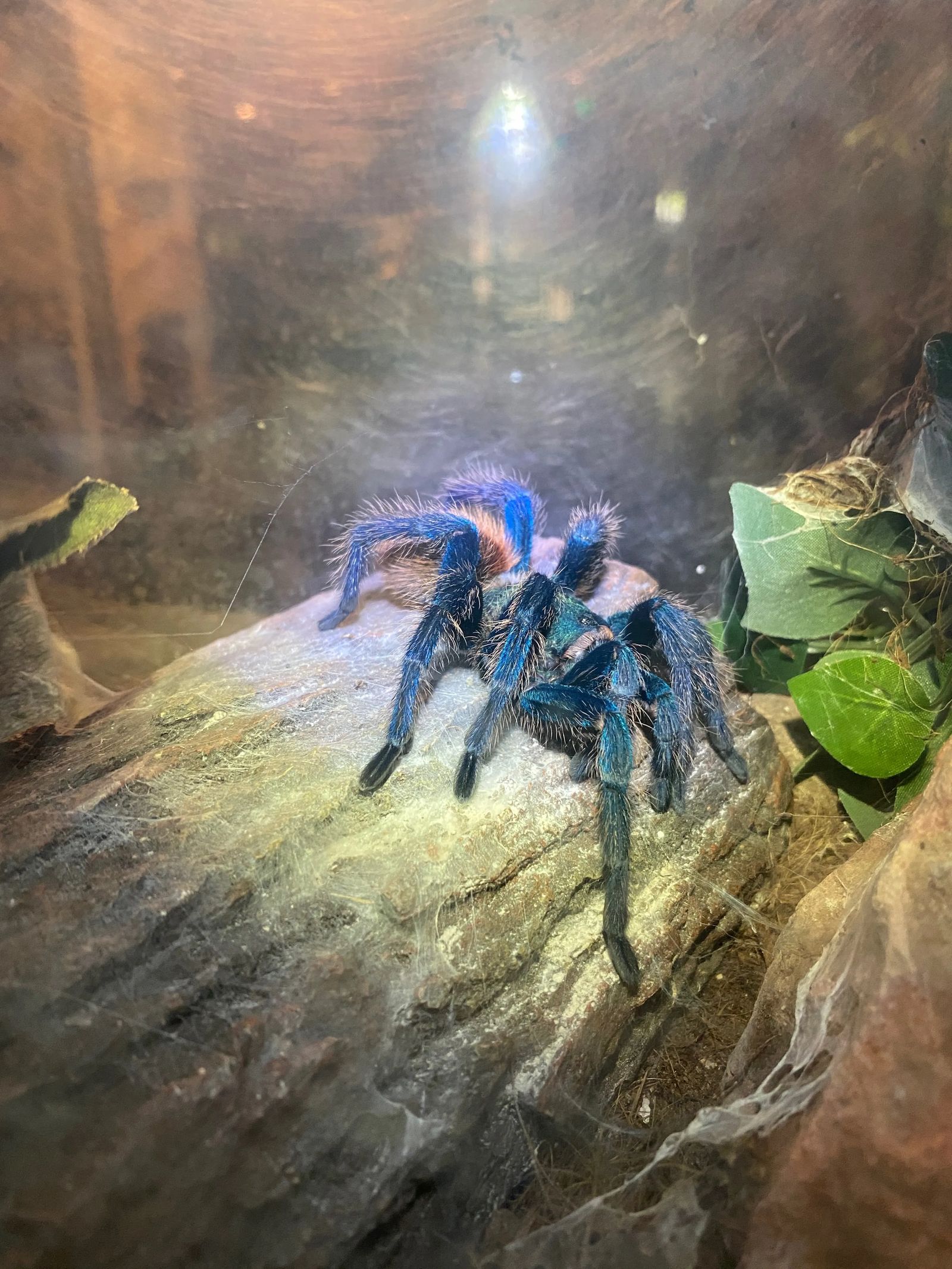
GREENBOTTLE BLUE TARANTULA
Chromatopelma cynaeopubescens
Greenbottle blue tarantulas are native to Venezuela, primarily within the Paraguana Peninsula. They can vary in color; their legs can range from metallic green, blue, grey, purple, or brown, their carapaces or what might look like their head are typically blue or green, while their abdomen and or body part is more of a bright orange. Due to this coloration, they are also known as the “orange bottlebrush tarantula”. Like all tarantulas, they have four pairs of legs, making eight legs total, and they have four other appendages near the mouth called the chelicerae, which contain the fangs and venom, and pedipalps, which are used as feelers and claws. Due to their bodies being made up this way spiders are technically not insects, but arachnids, because insects have three body parts and six legs total, whereas tarantulas and spiders have two body parts and eight legs total. Due to their vibrant colorations, these tarantulas are becoming more popular amongst the pet trade which can affect their population negatively.
OUR CURRENT RESIDENT
Bluey, Gender Unknown – Hatched on December 1st, 2021 (estimated and celebrated)
Bluey came to live at ZooMontana in March 2022 from Eden Exotics in Lolo, Montana. Bluey is located inside and is in the habitat with the blue light and may be hard to see with all the webs that they spin. Bluey is often very still or not moving or moving very slowly. An easy way to tell the difference between Bluey and our other tarantulas is the light to his habitat is also blue!
TAXONOMY
- Kingdom: Animalia
- Phylum: Arthropoda
- Class: Arachnida
- Order: Araneae
- Family: Theraphosidae
- Genus: Chromatopelma
- Species: Chromatopelma cynaeopubescens
ANIMAL FACTS
Carnivore: mainly eat insects, worms, birds, and mice (and eat infrequently)
Population Status: currently listed as No Status
Habitat: semi-arboreal: trees and the ground
Activity: nocturnal- mostly active during the night
